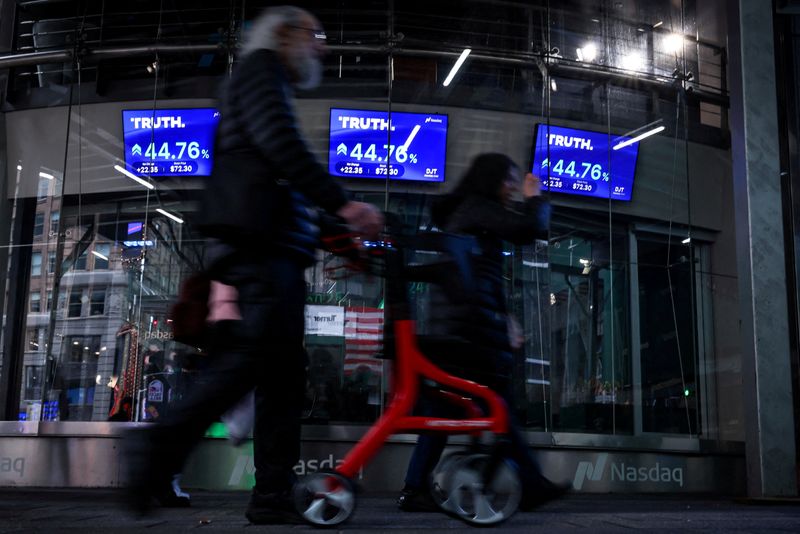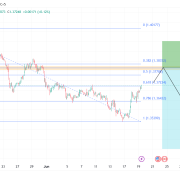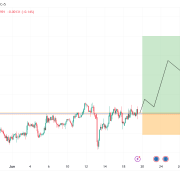
In the third quarter of 2024, CN (Canadian National Railway (TSX:CNR) Company, ticker: CNR) reported modest financial growth and operational improvements amidst a backdrop of macroeconomic and labor challenges. President and CEO Tracy Robinson highlighted a 2% increase in earnings per share (EPS) year-over-year, reaching $1.72, and an operating ratio (OR) of 63.1%. Despite softer macroeconomic conditions, CN anticipates volume growth driven by a robust pipeline of customer opportunities and has implemented operational adjustments to align resources with demand.
Key Takeaways
CN’s EPS increased by 2% year-over-year to $1.72 with an OR of 63.1%.
Improved car velocity to 223 miles per day and train speed to 20 miles per hour.
Macroeconomic conditions have softened, impacting the merchandise business.
Hiring has been paused, and resources have been adjusted, especially in Eastern and Southern regions.
Safety improvements and efficiency gains include a 30% reduction in accident frequency.
Revenue increased by 3%, and RTMs grew by 2%, driven by long-haul intermodal and refined petroleum products.
CN expects low-single-digit adjusted diluted EPS growth for 2024 and volume growth in the lower end of the 3% to 5% range.
Operating ratio is expected to improve in Q4 compared to Q3.
The company is investing in infrastructure to support growth in energy and intermodal markets.
CN’s competitive positioning and pricing strategies are set to outpace railroad inflation heading into 2025.
Company Outlook
Continued growth in intermodal volumes expected, particularly in international business.
Adjusted diluted EPS growth projected to be in the low-single digits for 2024.
Volume growth anticipated to be in the lower end of the 3% to 5% range.
Operating ratio expected to improve in Q4.
Key initiatives include expanding frac sand terminal capacity and operations at the Greater Toronto Area fuel terminal.
Bearish Highlights
Macroeconomic headwinds could affect overall volume recovery.
Labor negotiations at West Coast ports and the Port of Montreal pose potential impacts on customer confidence.
Oversupply issues in domestic trucking operations.
Bullish Highlights
Strong tailwinds from grain and petroleum sectors.
Ongoing infrastructure investments from customers.
Optimism regarding Falcon premium service in Mexico.
Misses
Labor uncertainties and market conditions led to declines in domestic intermodal and automotive volumes.
Q&A Highlights
Management is confident in improved OR in Q4 despite Q3 typically having higher margins.
Concerns addressed regarding achieving 3% to 5% volume growth, with a need for a nearly 12% sequential increase.
Pricing expected to outpace railroad inflation as CN moves into 2025.
Adjusted three-year EPS outlook to a high-single-digit CAGR, with more details to come in January.
CN’s leadership remains focused on maintaining operational fluidity and preparing for growth across various sectors. With strategic adjustments in operational capacity, resource management, and capital expenditure planning, CN is poised to navigate the current market conditions while delivering shareholder value and ensuring service reliability for customers.
Full transcript – Canadian National Railway Co (CNI) Q3 2024:
Operator: Good afternoon. My name is Sarah and I will be your operator today. All participants are now in a listen-only mode. At this time I would like to turn the call over to Stacy Alderson, CN’s Assistant Vice President of Investor Relations. Ladies and gentlemen, Ms. Alderson.
Stacy Alderson: Thank you. [Foreign Language] Good afternoon, everyone, and thank you for joining us for CN’s Third Quarter 2024 Financial and Operating Results Conference Call. Before we begin, I’d like to draw your attention to the forward-looking statements and additional legal information available at the beginning of the presentation. As a reminder, today’s conference call contains certain projections and other forward-looking statements within the meaning of the US and Canadian securities laws. These statements are subject to risks and uncertainties that may cause actual results to differ materially from those expressed or implied in these statements. They are more fully described in the forward-looking statements section of the presentation. After the prepared remarks, we will conduct a Q&A session with our analysts. As usual, we ask that you please limit yourself to one question. Joining us on the call today are Tracy Robinson, our President and CEO; Derek Taylor, our Chief Field Operations Officer; Patrick Whitehead, our Chief Network Operations Officer; Remi Lalonde, our Chief Commercial Officer; and Ghislain Houle, our Chief Financial Officer. It is now my pleasure to turn the call over to CN’s President and Chief Executive Officer, Tracy Robinson.
Tracy Robinson: Thanks, everyone, for joining our call today. Most of you would have already seen in our press release on September 10th, where we updated our 2024 guidance and longer-term outlook. We’ll get to more details about the quarter in a moment, but I’d like to start by saying a few words about how we see things now that the noise of the past two quarters is mostly behind us. Now first, let me say a few words on operations. We implemented our scheduled operating plan 30 months ago now. It’s proving over and over again to be the right plan for our network and the velocity it creates, the levels of customer service it supports and in its resilience and ability to recover. The latest proof point is the way our operating performance rebounded after both the fires in Northern Alberta in July and after our labor-related shutdown. And we bounced back quickly. When you’re putting up numbers like October month-to-date car velocity at 223 miles per day, train speed of 20 miles per hour, all while handling record Western Canadian grain volumes and maintaining really strong local service levels for our customers. When the team is delivering at those levels, you know that this is a pretty well-oiled machine. This is a credit now to Pat, to Derek and to the entire operating team. Now second, the macro is lighter than what we expected coming into 2024 and maybe even a bit softer than what we thought on our last call back in July. We’re seeing this play out in our merchandise business, especially in construction related commodities as well as in automotive. Having said that, we’ve built up a strong pipeline of opportunities with our customers that are unique to this network. We see this driving more than half of the volume growth in coming years. So we’re confident that these will allow us to grow in spite of some of the macro challenges. And finally, because of the softer economy, we haven’t seen the levels of volumes that we expected on parts of our network this year. Because of that, we’re continuing to adjust our resource levels to more closely align resources to the demand we see coming our way, particularly in our Eastern and Southern regions. We stopped hiring on certain parts in the network earlier this year and we continue to be purposeful in our decisions around labor. We’re finding that balance between minimizing costs and having the right resources in place to handle the growth, which means some surge capacity in key locations. Now we have and will continue to take actions to drive margin improvement into the fourth quarter and beyond, and Pat will speak to this in more detail in a few minutes. And we’re in the process of firming up our outlook for 2025 and we’ll be able to give you more details on that in January. But as we do this work, our story remains the same. We’re committed to delivering on our growth agenda, underpinned by our scheduled operating model. Our recipe of volume growth, pricing ahead of rail inflation and incremental margin improvement will enable us to deliver our three-year outlook of high single-digit EPS CAGR. Okay. Now turning to the quarter. I’m pleased that the Teamsters arbitration process is now well underway. This gives us later stability on the railway. And with the work stoppage behind us, our operation is fully recovered, and Derek will give us more insight into how we managed through and lifted out of that disruption. On the demand side, the noise created by the labor situation clearly had an impact on our business in the quarter most meaningfully in intermodal. Following the network restart, we saw a snapback in domestic intermodal demand and expect a more gradual return of the international business based on our experience with the Canadian West Coast Port Strike last year. Vancouver and Rupert remain compelling gateways and Remi and the team are working hard to get those volumes back as quickly as possible. Now just a couple of things to mention on the cost side. One, we were resourced to handle more volume and two, bringing the network to an orderly shutdown as well as the Alberta wildfires came with some additional expenses, which combined came through in our margin performance this quarter. Putting it all together, we delivered $1.72 of EPS for the third quarter, 2% higher than last year, with an OR of 63.1%. Ghislain will give us more details in just a few minutes. Now we’re looking past Q3 and into the fourth quarter to really demonstrate what this railroad can do. And now I’ll hand it over to the team to provide more detail. Over to you, Derek.
Derek Taylor: Thanks, Tracy, and good afternoon, everyone. I want to start by acknowledging our railroaders out in the field, running the railroad day in and day out. They’ve been doing a great job and I’m really proud of how well this railroad ran in the third quarter, especially when you consider what we had to manage through. My personal thanks goes out to the entire team. First, was the devastating forest fires in Jasper, Alberta in July. This is on our Essence subdivision that connects the West Coast to the rest of our network and is the busiest corridor on the entire CN system. There was a two-day period when the fires were burning that we just couldn’t run any trains at all. Once the worst of the fires passed, we were still severely limited in our operations as Jasper is located in a national park. We needed to coordinate all of our activities with the park’s incident commander on the ground and even modify how we operated. This included not being able to stop trains within the park boundary, which meant we had to redesign our train service for a crew change location 60 miles away. This was a big deal and the team did an outstanding job of managing through all the exceptions. Second was the TCRC work stoppage in August, where we undertook an orderly shutdown of our entire Canadian network. This wasn’t a decision we took lightly, but it was necessary to ensure the safety and security of the railroad and our customers’ freight. In the lead up to the stoppage, we embargoed certain traffic and started to park equipment in key locations for the eventual restart. This obviously had an impact on our locomotive productivity and fuel efficiency depth in the quarter. Since the stoppage, we’ve seen those metrics trend in the right direction. During those disruptions, we clearly couldn’t operate the way we know how to. We saw the impact of that on our key operating metrics of car velocity at 208 car miles per day for the full quarter and through dwell of 7.1 hours. Disciplined adherence to the plan provide the resiliency we needed and we bounced back quickly. It’s impressive that both car velocity and through dwell for the quarter were flat on a year-over-year basis in spite of the challenges. In fact, the month of September, which was clear major disruptions had the best monthly car velocity and through dwell of the last three years, approaching 220 car miles per day and 6.8 hours, respectively. As we head into a grain season this fall and we’ve already seen a record September movement of grain in terms of volumes, I really like where we’re at. We remain focused on delivering on our service commitments to our customers, and we continue to look for opportunities to improve train size given the mix of business that we’re handling. At its core, the strength and skill of the team combined with outstanding execution in what was an extremely dynamic operating environment, even with a solid plan, is the right formula to manage through disruptions and deliver for our customers. Now I’ll turn it over to Pat.
Patrick Whitehead: Thanks, Derek. Let’s start by talking about safety. We believe all incidents and injuries are preventable and our priority is to ensure everyone goes home safely at the end of each day. In an environment as dynamic as ours, there are hundreds of decisions our teams make every day to move good safely. To support our frontline, we have implemented a comprehensive program that emphasizes changes to behavior and the proactive identification of hazards and high-risk behaviors. We have trained almost 500 frontline managers on exposure reduction techniques and human performance with a plan to train a 1,000 by the end of the year. We pair this with our leading safety indicators to tailor programs and tools to prevent the most common incidents, eliminating hazards where possible. Along with our mock derailment sites, our four season walking simulator, we’re excited to add another industry first, our slack simulator. The simulator teaches employees techniques for riding equipment, while introducing in-train courses or slack. We continue to engineer industry-leading real-life experiences in a controlled environment to best prepare our teams in the field. I’m pleased with our safety performance in the third quarter, where we saw a 30% improvement in the accident frequency ratio and a 4% improvement in the injury frequency rate. We are always striving for zero injuries and zero accidents. Turning to resourcing the network. We continue to take steps to adjust to the volume environment. We have stopped hiring, furloughed in surplus areas and are seeing our headcount gradually come down as we experience attrition. We are purposefully parking locomotives and cars and can flex up quickly when the volumes bounce back. In addition, our asset utilization strategy to drive availability through improved reliability has been making the most of the locomotives and cars that are online while lowering our cost to operate. Our strategy includes software enhancements to improve maintenance scheduling, executing our DC to AC modernization plan and process changes to reduce shop dwell. Altogether, our high horsepower locomotive availability has increased translating to 30 more locomotives available per day while lowering costs on maintenance and materials, which over time will reduce the capital required for additional locomotives as volume increases. Additionally, we have improved our work block planning and productivity, achieving a 5% unit cost improvement with our tie installations compared to 2023 in the face of labor and material increases. The railroad is running well. The plan is working and we’re set up to maintain fluidity. We have available capacity in the Eastern and Southern regions to easily onboard growth. In the West, we have sufficient capacity to efficiently handle growth, and we are staying close to Remi and his team to make sure that we have a clear line of sight to the medium and longer-term volume outlook. For instance, this year, we are continuing to invest in Double-Track on the Edson Sub, West of Edmonton, which will enable us to maintain velocity and fluidity as we bring on growth in energy, bulk and intermodal markets. On that, I’ll pass it over to Remi to give more color on the commercial side. Remi?
Remi Lalonde: All right. Thank you, Pat. [Foreign Language] CN grew revenue by 3% in the quarter against last year and volume by 2% in RTM terms, led by long-haul international intermodal and refined petroleum products, including CN-specific initiatives and stronger Canadian grain exports. Business has been a bit more challenging than expected due to the labor uncertainty and lower-than-expected industrial production and manufacturing activity and mixed signals around consumer confidence. Revenue per RTM improved by 1%, reflecting higher freight rates, but also longer average length of haul. Foreign exchange and fuel surcharge impacts were small and offsetting. Carload volumes slipped by 2%, mostly due to lower domestic intermodal, automotive and short-haul iron ore shipments. Let’s take a look sector by sector on an FX-adjusted basis. Overall, intermodal RTMs grew by 7% in the quarter against last year and revenue was flat. This reflects an 18% increase in international RTMs offset by a 14% decrease in domestic. Volumes started to soften in the second quarter and through the third due to the labor situation as shippers activated contingency plans, including port diversions and modal shifts. Q3 international volume still shows a year-over-year improvement as we moved more traffic through Western Gateways and gained key customer wins by selling end-to-end supply chain efficiency. But the domestic volume in the quarter reflects the full impact of combined pressure from labor uncertainty, market softness and an oversupply of truck capacity. The shift in mix and the resulting increase in average length of haul pushed revenue per RTM down by 7%. Quarterly automotive RTMs dropped by 5% and revenue by 10% year-over-year on account of rising dealer inventory toward pre-pandemic levels as well as plant outages and retooling. Revenue per RTM slipped by 5%, reflecting a 7% increase in length of haul due to the relative shift in mix towards the import business. We saw RTMs in revenue in petroleum and chemicals grow by 9% and 10% in the quarter, respectively, due mainly to refined fuels and NGLs, including projects like the Greater Toronto Area fuel terminal and propane exports through Prince Rupert. For Metals and Minerals, quarterly RTMs and revenues were down by 5% and 4% respectively. After a very strong year for frac sand, volumes softened late in the quarter due to an earlier-than-expected seasonal slowdown in drilling activity. Our shipments of other Metals and Minerals reflect market conditions for steel and construction materials, modal shifts with the labor uncertainty and certain customer production interruptions. The prolonged lumber market slump contributed to a 7% drop in forest product RTMs and a 1% decrease in revenue. In fact, lumber prices are forcing many sawmills to curtail production. Overall coal RTMs fell by 9% and revenue by 6% on account of production and supply inconsistencies at various Canadian mines as well as a further deterioration in US thermal coal demand. Grain and fertilizer RTMs improved by 4% and revenue by 8% on strong demand for both Canadian and US grain. In fact, our grain RTMs were up by 15%, but the impact was offset by lower fertilizer volume as we lapped last year’s nonrecurring export potash opportunity from the Portland terminal outage. Despite a more challenging macroeconomic environment than expected, CN-specific growth initiatives continued to deliver. For example, we have line of sight on growing frac sand terminal capacity in support of drilling activity in Northeast BC and Alberta with one unit train terminal set to open before the end of this year and tracking for two more next year. Second, we’re building our renewables story with a ramp-up of crushed plant capacity on both sides of the border. And finally, the Greater Toronto Area fuel terminal is ramping up on expectation, receiving greater volumes of gasoline, diesel and ethanol into a growing end market and we’re making good progress with our partners for the second phase of the project targeting in operation towards the end of next year. Here’s what we expect to see in the fourth quarter by business unit. Despite soft consumer confidence in the US and Canada, we’re looking for sequential and year-over-year growth in intermodal on continued momentum around the international business. Prince Rupert remains a compelling gateway for customers. As we turn the page on the labor situation, we’re working very hard to regain our earlier momentum for West Coast volumes by selling our service advantage. Success here will be in the share of US destination mix, which we expect will return gradually based on our experience following last year’s Port Strike. Accordingly, we’ve seen volumes recover more quickly in the domestic segment compared to international. But I should note that there is still an overhang of lingering labor uncertainty at some Canadian ports. For automotive, we expect to see volumes stable to slightly down against last year in line with the CN-served plant schedules and OEM sales forecasts. Petroleum and Chemicals should continue to perform well and in line with last year, supported by the projects despite offsetting crude shipments and an unfavorable change in NGL mix. Frac sand volumes will soften after an exceptionally strong four quarters due to an earlier year-end seasonal slowdown. Our volume expectation for other Metals and Minerals against last year is flat to slightly down due to softer market demand. With a difficult lumber market, we don’t expect significant improvement in forest products in the near-term, but we should see a seasonal uptick in overall volume against last quarter. For coal, we expect a slight year-over-year uptick in overall volume as run rates improve sequentially, including the ramp-up of the restarted Quintette met coal mine. Coming off record Canadian shipments in September, grain is strong, and we’re looking to sustain the momentum into Q4 by running the supply chain to capacity. The US, we’re looking at an oversized crop in our draw territory, which is good for volumes. The lower potash against last year’s opportunistic gains due to the Portland terminal outage will be a bit of a drag. Overall, our expectation is that volumes will continue to grow with initiatives unique to our network on a backdrop of a weaker-than-expected economic landscape. Ghislain, wrap it up.
Ghislain Houle: [Foreign Language] Turning to Slide 14. Q3 diluted EPS was up 2% versus last year. The operating ratio increased by 110 basis points to 63.1%. Obviously, volumes and costs were impacted by the Alberta wildfires in July and the work stoppage in August. From a macroeconomic perspective, lumber remains at the trough and consumer consumption continues to be tepid. Overall, revenues were up 3% year-over-year. Let me provide you with more details on the quarter. In terms of expenses, which I will speak to on an exchange adjusted basis, labor was 2% higher versus last year, 2% higher average headcount. General wage increases partly offset by lower incentive compensation. We also saw higher short-term unproductive costs in the quarter relative to deadheading, recrews and held away costs mostly due to the work stoppage in August. Fuel expense increased 5% versus the same period last year due to a 2% increase in gross ton miles, 3% unfavorable fuel efficiency and a true-up to intercarrier fuel estimates in the quarter, partially offset by a 6% decrease in price per gallon. Purchased services and material increased by 5% versus last year mostly due to higher material and repair costs. We generated around $2.1 billion of free cash flow year-to-date at the end of September, about $200 million lower than last year, mainly due to higher capital expenditures partly offset by higher net cash from operating activities. Under a current share repurchase program, which runs from February 1st, 2024, through January 31st, 2025, we have repurchased close to 12 million shares for almost $2.1 billion as at the end of September. We have paused our share buybacks as we continue to manage to our 2.5 times adjusted debt to adjusted EBITDA leverage target. Moving to Slide 15. We are affirming the guidance provided in our September 10 press release of low-single-digit adjusted diluted EPS growth in 2024. As we enter the final few months of the year, overall industrial production now looks to be largely flat for 2024. The good news is that we are encouraged by the progress of our CN-specific growth initiatives and the Canadian grain crop that Remi just mentioned. We are continuing to assume volume growth in terms of RTMs to be at the lower end of the 3% to 5% range mindful that labor uncertainty persists at some of our Canadian ports. On our operations, I would reinforce that the network is fluid and running very well. We continue to take steps to align resources with our volume outlook and expect to see the benefit of our actions reflected in improved fourth quarter margins. Our foreign exchange and WTI assumptions continue to be around $0.75 and US$80 to US$90 per barrel respectively. Our effective tax rate for 2024 is not now expected to be between 24% and 25%. We’re also affirming our ’24 to ’26 financial outlook of adjusted diluted EPS CAGR in the high-single-digit range. In conclusion, let me reiterate a few points. The network is running well and is fully recovered from the work stoppage in the quarter. Our CN-specific growth opportunities are continuing to deliver. We are delivering industry-leading service to our customers and we remain intensely focused on delivering growth at low incremental cost. Let me pass it back to Tracy.
Tracy Robinson: Thanks, Ghislain. Operator, we’ll now take questions.
Operator: Thank you. We will now begin the question-and-answer session. [Operator Instructions] Your first question comes from the line of Ken Hoexter with Bank of America. Please go ahead.
Kenneth Hoexter: Wow, great. Good afternoon. Ghislain, you kind of threw in there, we expect the operating ratio improvement kind of in fourth quarter given some of the things you’ve move beyond. Can you talk about kind of scale, how should we think about the level of sequential improvement from third quarter to fourth quarter?
Tracy Robinson: Hey, Ken, it’s Tracy. I’ll take the first stab at that and I know Ghis will play a little cleanup for me on it. Without a doubt, our margin is going to improve in Q4. Now Q3, as you know, is normally the quarter that we have our best margins, and this year, it’s going to be Q4. We’re pushing hard to rightsize the railroad to the volume that we now expect. And I think what’s really going to determine exactly where it lands is international volumes. Remi is watching that very closely and working hard to get that up again. And that will drive exactly where it’s going to end up. Ghis, anything to add?
Ghislain Houle: No, I think you covered it well. I think we’re not going to provide a number, but definitely, we’re confident that we will get a better OR in Q4 than we did in Q3 with all the noise that you’re all aware of, Ken. So stay tuned on that one. But I think we’re going to deliver a better one and our margins are going to improve.
Tracy Robinson: Thanks for the question.
Ghislain Houle: Thanks for the question.
Kenneth Hoexter: Thanks.
Operator: Your next question comes from the line of Fadi Chamoun with BMO Capital Markets. Please go ahead.
Fadi Chamoun: Hi. Good afternoon. Thanks for taking my question. Maybe just on this volume guide because a low end of that 3% to 5% range, if I’m backing the numbers, okay, means that you have to grow volume almost 12% sequentially and 3% year-on-year. You’re down, I think, somewhere around 2.5% quarter-to-date. How much visibility and conviction do you have in some of these levers that Remi you talked about in terms of how you can ramp up through the quarter?
Remi Lalonde: Yes. Thanks for the question. So, yes, so sequentially, there is an update that we’re looking at year-over-year, it will be a little flatter. But I’d tell you that the tailwinds that we have behind us are strong grain. We talked about, we’re coming off a record September here and the US grain crop also looks good. Petroleum and Chemicals sequentially will be strong on some of the projects. It’s a bit of a headwind from mix on NGLs recovering domestic intermodal also will be good. But look, we’re fighting into a macro environment with a bit of headwind here. And as Tracy talked about recovering the US mix in our Western Gateways for intermodal is going to be one of the things that we’re going to be very, very focused on. And the other piece is potash. We’re coming off and lapping against a very strong year last year with the opportunistic potash moves that we have. But overall, yes, we’re down a little bit quarter-to-date, it is pretty early, but I think we’re comfortable with the low end of the range that we guided to. Thanks for your question.
Fadi Chamoun: Thank you.
Operator: Your next question comes from the line of Chris Wetherbee with Wells Fargo. Please go ahead.
Christian Wetherbee: Hey, thanks. Good afternoon. I guess I maybe wanted to ask about the resource alignment. So relative to demand that you’re seeing, certainly it sounds like demand maybe is a little bit softer than what you’re hoping for earlier in the year. But I guess maybe be a little bit more specific about what are the some of the levers you can pull to kind of get the cost structure a little bit better aligned. And I know it’s early, but as you’re starting to think about ’25 in the context of that longer-term CAGR, can you just maybe give us a little bit of parameters of how you’re thinking about potential earnings growth?
Tracy Robinson: So, Chris, I’ll take the start end of that. And listen, earlier this year, we were still optimistic about economic growth. And then, of course, we had the CN initiatives on top of that. And up and through probably early to mid-May, we were running from a volume perspective, well ahead of our plan, particularly in international as we constructed our portfolio there. When the labor uncertainty kind of hit, I would say, it got pretty money for us to figure out what to be ready for when we got through there. But as we’ve come through that, it’s pretty clear that there is a softer kind of macroeconomic environment than we had anticipated. And as we look forward, we see that continuing through next year, so kind of lower and longer. And so we are, we started in Q2, as I said earlier, but we are starting to make those adjustments. And we’re driving pretty hard to this new view of what volume is going to look like. We’re doing it differently across the different regions. But Pat, why don’t you give a bit of an overview around the levers that we’re pulling as Chris said.
Patrick Whitehead: Certainly can. So we continue to adjust all of our resource levels to match the volumes that we see. You can see the changes in our FTE counts, particularly transportation, train and engine service folks. We’re as you see the transition from Q2 into Q3, we were down about 200 train and engine FTEs and now we’re down well over 600 on the train and engine service side. We’ve parked 140 locomotives. We have returned over 1,000 center beams that were leased. We’ve reduced intermodal platforms by 20%, driven primarily by off-lining cars to foreign railroads. And we continue to evaluate each and every day, the resources that are needed for the volumes that we see and we’ll continue to make those changes.
Tracy Robinson: So let me just kind of close-up on that. The railroad is running really well, really well. In fact, almost a little too well. I’d want a little bit more tension between the volumes and kind of our operating capacity. So the guys are on it and we’re driving down to the levels that we need to, to make sure that our margins are in the right place as we look forward. The secret to this and the art more of this is making sure that we take it to a level that leaves us with the capability to grow with our customers as we look forward. We have great line of sight on the CN-specific initiatives. Remi talked about some of them. When we’re replenishing that pipeline. The big question is where we put the pin on the macroeconomic. And we’re doing that work as we finish off the year here and we’ll have a little bit more color for you in January when we talk to you then. Thanks for the question, Chris.
Operator: Your next question comes from the line of Cherilyn Radbourne with TD Cowen. Your line is open.
Cherilyn Radbourne: Thanks very much. Good afternoon. When you think about the curveball that 2024 has grown up at CN and let’s set aside the CIRB process because that was really unusual and shouldn’t recur. Can you talk about how you’re factoring geopolitical issues and environmental events into your planning process today versus how you would have done in the past? And what do you think that will translate into any change in the way that you provide guidance in the future?
Tracy Robinson: That’s a really important question, Cherilyn. So let me tell you, yes, we do a lot more work than we ever have and do a lot more consulting on where we think and how we think the geopolitical events will impact volumes, whether it’s between North America and the rest of the globe or within North America. And we know for sure, we’ll never get it right. But the idea is that we understand the range of outcomes well enough to be able to make important decisions around how we resource our plan. Of course, important part of that process is also the consultations that we do with our customers. And that’s always highly informative. They’re close to their markets. They don’t always get it right either. And so what it means for us, we may end up guiding differently in the future that remains to be seen. But what it means for us is that we set a plan and we’re always looking for where we think we’ve got it wrong, and we need to be very responsive to changes as we’re making adjustments now. But, yes, without a doubt, it’s getting more and more difficult. What I like about what’s happening is the responsiveness of the railroad. It seems that whether it’s a change in flows or whether it’s an event or time or otherwise on the railroad, we have a really resilient operating plan and the way this all starts is really good service to the customers and that’s what we’re providing. Thanks for your question.
Operator: Your next question comes from the line of Scott Group with Wolfe Research. Please go ahead.
Scott Group: Hey, thanks. Good afternoon, guys. So I get the sequential margin improvement Q3 to Q4 Wondering if you think we can get back to year-over-year margin improvement in Q4? And then just separately, any update you can give us on pricing and how you feel about price heading into 2025? Are there opportunities for pricing to accelerate or not?
Tracy Robinson: Hey, Scott, we are going to see sequential margin improvement in Q4, as you said. Where exactly that land as we resize kind of our resources is going to depend more on the volumes. And I would say that we’ve got great line of sight on most. The one that’s really we’re keeping an eye on is the international volume. So that could drive us a little bit up or a little bit down, and so we’ll keep an eye on that. And second question, sorry, the second part of that, I don’t recall what it was?
Remi Lalonde: Pricing.
Tracy Robinson: Pricing. So the pricing this year has been fairly strong. I would say that we have put together, as we told you we would, the international portfolio that fits our network. And as Remi talked about it a little bit earlier, it’s based on the full end-to-end supply chain competitiveness and we’ve done what we need to do on that. It’s an important part of our portfolio. Pricing outside of that has been strong as we round the turn and go into 2025. We expect pricing ahead of railroad inflation. Our service levels are at the level that I think we should expect that. Remi, did you want to add anything to that?
Remi Lalonde: No, I think you covered it all, Tracy.
Tracy Robinson: Okay. Thanks, Scott.
Operator: Your next question comes from the line of Walter Spracklin with RBC Capital Markets. Please go ahead.
Walter Spracklin: Yes. Thanks very much, operator. Good afternoon, everyone. I just wanted to ask a bit on West Coast port activity and certainly with some of the inbounds we’re seeing into LA Long Beach is starting to jam it up a little bit. We’re seeing dwells go up there. Curious if that’s leading to any opportunity in particular for Prince Rupert. Are you seeing any new calls up there or even Vancouver as LA Long Beach gets a little bit jammed up?
Remi Lalonde: Yes. Thanks for the question, Walter. I talked about it in the prepared remarks, but the key challenge for us is going to be to recover the US mix through our Western Gateway. So the feedback that we get from customers is that the consistency and reliability of our service are very important and that service is valuable to them. But as we recover from a significant disruption typically through Western Gateways. Our business mix is probably 60-40 Canada to US. And as we recover from this, it’s closer to 80-20. So we know what the challenge is, but we’ve got a plan. And part of that is to talk to our customers about where we are and give them some derisking around the binding arbitration, so that they can feel comfortable coming back to us. So what we’re thinking about is that the pace of recovery, we’re modeling to be closer to what it was on the recovery from last year’s West Coast Port Strike. So that’s going to take a little bit of time. The first two months, which we are at right now are a little bit uncertain. But as volume starts to come back, then we expect it to be a little bit more quickly. But certainly, the congestion that we see in the US Ports and there was a good report earlier this week on that. I think just underscores the value proposition from places like Rupert and Vancouver as the quickest way down to Chicago, for example. So thanks for your question, Walter.
Operator: Your next question comes from the line of Brandon Oglenski with Barclays. Please go ahead.
Brandon Oglenski: Hey, good afternoon, everyone, and thanks for taking my question. I guess, given that you guys did change the three-year CAGR outlook to high-single-digit on EPS. I was wondering if you could provide any detail on the composition of like volume and price like you did at your 2024 Analyst Meeting. And I think, Tracy, you just said the volume outlook in the near term a little bit lower, but how does that shape up for those CN-specific opportunities in the out years?
Tracy Robinson: Brandon, the CN-specific opportunities are going to continue to give us a lift. But listen, we look forward to laying that out for you in January. Right now, we’re focused on finishing the quarter and then getting our plan in place for next year and we’ll lay that out for you in January. Thanks so much.
Operator: Your next question comes from the line of Steve Hansen with Raymond James. Please go ahead.
Steve Hansen: Yes, good afternoon. Thanks for the time. I was just hoping you could delve into a little bit more the early seasonal slowdown you’ve been seeing in frac sand. I know you also called frac sand as one of your growth opportunities on a self-help side. But is there anything specific driving that slowdown that you can see and whether or not you expect that to carry over into the new year? Thanks.
Remi Lalonde: Yes. No, thanks for the question. Yes, indeed. So we’re coming off four very, very strong quarters for frac sand. Year-to-date through Q3, we’re up, I think, 13% to 15% in RTM terms. So we think a lot of that is just pull forward of some of the work. So as things have slowed down in Q4, we’re still optimistic into next year. Our customers and their partners are building new terminals and that’s a great opportunity for CN because we can haul the sand up to the drilling sites and then we haul the NGLs to market. So we still feel comfortable and that’s based on our discussions with customers and the capital they’re putting in the ground to build that terminal capacity.
Steve Hansen: Appreciate the time. Thanks.
Remi Lalonde: Thanks for the question.
Operator: Your next question comes from the line of Ravi Shanker with Morgan Stanley. Please go ahead.
Ravi Shanker: Thanks. Good afternoon, everyone. Tracy, I think you said at the top of the call that I think the pipeline of new business accounts for about half of the growth next year. Do you have a sense of what a normalized run rate for that is? I’m just trying to get a sense of what we can consider to be kind of just normal macro rebound versus new initiatives and kind of maybe what that net number looks like versus normalized?
Tracy Robinson: So thanks, Ravi. I think as you think about it, we always hold ourselves to growing faster than the economy. And certainly that will be the case next year. What gives us the real lift is the CN-specific initiatives. And those aren’t those can be choppy. So it doesn’t come in equally at the new opportunities every month or every quarter. But what we did see is our customers investing in their infrastructure. We invest alongside where we need to make sure that we have the capacity to move it. But we make sure in those cases that we’ve got line of sight to the volumes that will give us the return on any investment that’s required. So Remi will, in January, play out more of what we see for next year, but it will be more you’ll get an annualized view of it. But it’s when as far as the new stuff that’s coming on, it will be different every quarter. I hope that answered your question. Thank you.
Operator: Your next question comes from the line of Konark Gupta with Scotiabank. Please go ahead.
Konark Gupta: Thanks, operator. Good afternoon. Just wanted to understand, as we look into next year, the Canadian grain harvest seems like it’s looking stronger from prior year, but any thoughts on the extended interswitching rules that are being contemplated in Canada?
Tracy Robinson: I’ll start with that and then we’ll see if Remi back up. I mean I got to tell you, we stand behind our service. And if we’re servicing our customers well, I mean, they’re going to, that’s what draws them to our lines. And anything related to extended interswitching slows down supply chain — slows down grain pipeline. It makes capital investment much more uncertain and causes problems from that perspective. We haven’t seen any impact so far and don’t expect to. And it’s just based on service levels. Remi, did you want to add anything more?
Remi Lalonde: Maybe to underscore that we’ve done a very good job on grain. We’ve delivered strongly for our customers and earned good market share as a result, including a record September. So in terms of the crop size for next year, we’ll have to see. We’re kind of in the range of the three-year boundary now. So we’ll have to see how all that shakes out. The end of the summer was a bit drier and warmer than I think we expected before. So we’ll see what it is.
Konark Gupta: Okay. Thank you.
Operator: Your next question comes from the line of Brian Ossenbeck with JPMorgan. Please go ahead.
Brian Ossenbeck: Hey, thanks. Good afternoon. So a couple of quick follow-ups. Just on the getting the share back through the, I guess, the US destination to the West Coast. Is there still hearing about uncertainty with, I guess, the final labor union out there to get their contract finalized. Does that come up in your conversations, Remi? And then just from a staffing perspective, it sounds like you’re making some adjustments. So I want to see if you can give us a little bit more context in terms of headcount and maybe what average comp should be for this coming quarter. Thank you.
Remi Lalonde: Yes. So on the first question, thank you for that. Yes, that is one of the things that comes up. Our international customers have some measure of needing to understand the longshoremen supervisors union in the West Coast. There’s also the Port of Montreal that has some labor uncertainty around it. So that’s part of the headwinds that we’re facing and trying to provide some comfort to our customers.
Ghislain Houle: And maybe, Brian, just to jump in on your second question on average comp per employee. If you look at the average comp in Q3 versus Q2, it’s lower by about 6%, and that’s mostly due to lower incentive compensation and we did a little bit more capital work in Q3 than in Q2. From a seasonality standpoint, typically average comp per employee in Q4 is typically higher because we have — we do less capital work. As we hit the winter, engineering forces will go and clean switches and we’ll do less capital work and therefore have less capital credits. So you can expect average comp on a sequential basis in Q4 to Q3 to probably go up. Thanks for your question.
Operator: Your next question comes from the line of David Vernon with Bernstein. Please go ahead.
David Vernon: Hey, good afternoon, and thanks for hosting the call and taking the question. So, Ghislain, you mentioned before about maybe kind of pulling back on the buyback a little bit as your credit metrics get to the higher end of your range. I guess I wonder if you guys are kind of coming out of this earnings growth trough and the multiples depressed, why wouldn’t you maybe think about getting ahead of the buyback to make it a little bit more accretive kind of overall, right? I mean if growth does start to accelerate, the multiple starts to expand, you get a little bit less bang for the buck. I’m just wondering why you wouldn’t might not think about sort of front-loading some of this return to growth?
Ghislain Houle: Yes, David, thanks for the question. Listen, this is a conundrum that we have and we debated on a quasi regular basis. To your point, when you believe that the stock price is down, why don’t you do more versus managing to our leverage target of 2.5. So far to your point in Q3, we’ve decided to manage to that target of 2.5 times average debt to EBITDA. We continue to have those questions. I mean we’ll continue at the debate, stay tuned. We’ll see what we do. But so far we’ve managed to that target. And this is discussions that we have. I mean we actually had the discussion with our Board yesterday. So stay tuned on that, but that’s what we’re looking at. Thanks for your question, David.
Operator: Your next question comes from the line of Benoit Poirier with Desjardins. Please go ahead.
Benoit Poirier: Yes. Thank you very much and good afternoon everyone. Could you maybe provide an update on what you see from Mexico these days in light of comments made by the new President and also the upcoming US election especially related to your Falcon premium service. And if you could say a few words on your trucking operation with TransX and H&R in light of the challenging fundamentals, that would be great. Thank you.
Tracy Robinson: [Foreign Language] There’s a lot in that one. Let me just start by saying that we’re watching all of the political scenarios across all borders very closely, but we’re managing our business to what we see in front of us. I’m going to turn to Derek to talk a little bit about our Mexico business that we do in conjunction in that case with the UP. Generally, we’re optimistic, but he’ll speak to it. And when it comes to TransX and the other trucking operations, I’ll have Remi make a couple of comments. Derek?
Derek Taylor: Yes. Thanks, Tracy, and good afternoon, Benoit. Listen, the Falcon service, it remains solid. I mean we continue to achieve a consistent reliable five day transit time to Eastern Canada. While we wish it would grow a bit faster. I mean it does take time when we said before for these customers to gain that trust. A lot of this product we’re moving is very time sensitive, but we’ve been very consistent. And we’re playing a long game, when we look at this. Our partners at the UP and the FXE. I’d like to thank them because we have a three railroad service that acts as a single-line service in terms of transit, time and the value of the product. So we’re confident where it’s at and we’ll keep after it. Remi?
Remi Lalonde: Yes. Thanks, Derek. And I guess what I’d say Benoit [Foreign Language] on the TransX, I mean if you look in our case, it’s in the domestic intermodal business. And one of the challenges we have for domestic business is really around an oversupply of truck capacity, which we’re still feeling there. And also that is closely correlated with consumer confidence. And so it is a challenging market in the domestic intermodal, but we expect it sequentially to do better versus the third quarter as they’re able to recover more quickly given the turnaround in assets. Best of luck [Foreign Language] Benoit.
Benoit Poirier: Thank you very much.
Operator: Your next question comes from the line of Jon Chappell with Evercore ISI. Please go ahead.
Jonathan Chappell: Thank you and good afternoon. Derek and maybe Pat as well. Just trying to understand how you’re managing these resources in the softer demand backdrop while you’re also still trying to recover volume to the West Coast Ports and there’s all this uncertainty with labor, et cetera. How are you thinking about kind of the cost side of it in the short-term versus maintaining service reliability. So that if you do get that recovery in the West Coast, the service doesn’t choke on a volume surge.
Patrick Whitehead: Okay. I’ll take that one. And I would say this, that while we are aggressively adjusting the resources to match the volume. We feel very good about where we are with this. We’ve created a locomotive surge fleet with what we have parked. The mechanical improvements that I talked about both in shop processes, reducing dwell. Some of the IT improvements we’ve made within the processes as well are producing for locomotives gives us more confidence in the locomotives that we have stored. So I feel very good about where we are with locomotive availability should we have a surge. We feel good about where we are from a car perspective. And frankly some of the self-help that we have done with simplifying the crewing structure has produced a surplus and led us to some of the reductions that we’ve made in overall train and engine head count. So we feel good about where we are from a resource perspective and the railroad is running very well and that has also created capacity. Derek, anything to add?
Derek Taylor: Yes. No, thanks, Pat. Pat and I are attached at the hip when we look at these resources and listen, I mean, when you look at it with the macroeconomic backdrop and other things, we have been very patient and we’ve taken a very mature approach. When you look at this resource realignment we’ve recently done over the past time period really starting back with lead and attrition workforce starting in Q2 in certain places. So on a go-forward basis, not all locations are created equal, but we took more of a scaffold approach to where we needed to adjust those resources at together. Thanks for your questions.
Tracy Robinson: Let me just stay on top of that one final thing is our service quality will always be primary, right? And so part of our part of our approach on a scheduled operating plan and we think we’ve demonstrated that we deliver a really high level of service. And what we’re doing now is just resourcing the railroad to continue to do that at a slightly adjusted volume levels. And as Derek said, it’s precision stuff around where we’re making those adjustments. Thanks so much, Jonathan.
Operator: Your next question comes from the line of Stephanie Moore with Jefferies. Please go ahead.
Stephanie Moore: Hi. Good afternoon. Thank you. I wanted to follow up on kind of your updated view on the underlying volume environment given your updated kind of mid-single-digit outlook, I’m sorry, given your updated midterm EPS outlook. I think historic or before you had said you were kind of viewing that CN-specific initiatives would drive about half of the volume performance and then kind of the other half would be kind of macro driven. So as you look forward and what’s embedded in the now high-single-digit EPS growth. How would you kind of look at a balance between underlying market growth or macro and then your own specific initiatives? Thanks.
Tracy Robinson: Thanks, Stephanie. I think what we’ve said is that as we look forward that is we will grow faster than the economy, so faster than the macro. But about 50% of our volume growth is going to come from those CN-specific initiatives. And that may vary over time. But as we look forward right now, that’s kind of the way that we’re seeing it. And as we get as we confirm our numbers for 2025, and we’re talking to you in January, we’ll give you a little more color on that then. Thanks for the question.
Operator: Your next question comes from the line of Daniel Imbro with Stephens Inc. Please go ahead.
Daniel Imbro: Yes, thanks. Good evening, guys. Thanks for taking our questions. Maybe to come back to the near-term kind of 4Q volume outlook you’re embedding. I think we’re starting the quarter a little bit softer. You mentioned automotive and I think chemicals are soft to start the quarter. So to reach the low end of this guide, I guess, are we assuming a change in that trend line in some of the weaker categories or what is embedded to drive that kind of improvement to get to at least the 4Q guide as we head into 2025.
Ghislain Houle: Well, for one thing, the big piece of the puzzle that we’re going to work on is the international intermodal volumes, which I talked about a little bit earlier, which includes driving our US mix through Western Gateway. So that’s going to be a big area of focus for us. The other businesses, grain has been strong and will continue to be strong, both in Canada and the US and then recovering in domestic intermodal as well. So I mean I think that, that should all carry us into the low end of the range that we guided to earlier. But as we said, there is a couple of pieces of headwind. The potash is a hard comp against last year. And then there is the macro environment as well that we’re navigating to. Thanks for the question.
Operator: Your next question comes from the line of Tom Wadewitz with UBS Financial. Please go ahead.
Thomas Wadewitz: Yes, good afternoon. Tracy, at the beginning of the call, I think you talked about like the way the railroads running. And I know we’re calling back to kind of some of the things Ed did when he was kind of came in and set the team on a different course. He moved away from train length and more just towards make sure you’re on time and not waiting for trains. Is there an opportunity in the carload business to kind of review the schedule and maybe look at train length a little bit or do some other things if you see some of the weakness persist, right? Like I think some of the areas you talked about weakness seem like carload markets. And I’m just wondering if you can do anything on schedule that helps you if some of those markets stay weak or is that something where you just say, hey, we just want to maintain the service and we’re not really going to do things on the train lengths or train starts? Thank you.
Tracy Robinson: Hey, Tom. Well, for the first thing, we never moved away from train length. What we said was that the trains are going to depart on time. We’re not going to hold them to wait for them to get longer before they depart. And so we want long trains to depart on time. But what we’re going to do is not make those decisions tactically every day, but we build that into the plan. So as we look at the operation every day, if we discover that there’s opportunities to tweak the plan, to refine the plan so that we can take out a train start, combine trains and move longer trains then we do that, but that train departs on time. And so it’s not one or the other. It’s what’s primary. And for us, the scheduled operation is primary and will drive. Derek or Pat did either one of you wanted to add?
Derek Taylor: Yes. No, Tom, it’s a great question. Listen, we have made some adjustments throughout the last two quarters. Now it’s more of a scaffold approach because the manifest volume is not down so significantly, two trains equal one. But there are certain days a week we have taken a number of train starts out. So we’re taking a mature approach where we’re going to run our base plan and our schedule plan, but when we need to adjust, Pat and his team work together to make sure that happens. Pat, anything you want to add?
Patrick Whitehead: Yes. I would just say that we approach the plan from a perspective that we’re going to produce a plan that the outcome is the train load and train length that we desire that maximizes locomotive and crew productivity while providing the customer service level that we expect, which is the customer service level is near industry best as we look at our local service adherence plan.
Tracy Robinson: Thanks, Tom.
Thomas Wadewitz: Okay. Thank you.
Operator: The last question comes from the line of Ben Nolan with Stifel. Please go ahead.
Benjamin Nolan: Yes, I appreciate it. I was going to ask a little bit about and knowing that you’re going to talk a little bit more about the outlook in 2025 in January. Any early thoughts on how CapEx is expected to develop given focus on equipment efficiency and so forth?
Tracy Robinson: Yes. Capital is, of course, an important part of our plan for 2025 and every year. And as we put it together, it’s based on a number of things, but one of those things is what the volume levels are. So maintenance capital, of course, is intended to replenish the network as you consume it through day-to-day operations. And so what volume levels are and what they are over time has an impact on how we think about maintenance capital. We’ll be looking closely at that as we firm up volumes. For the kind of return capital or the growth capital, we only spend that when we have a line of sight and a coordinated timing with our customers and our customer initiatives as that volume comes on. So that we’ve got line of sight to the intended returns on that capital. So we’re working through all of that as we kind of put our plan together in for 2025 and you’ll hear about it in January and more specifically. But just know that it’s a dynamic plan.
Benjamin Nolan: Got it. All right. Thank you.
Tracy Robinson: Thanks so much.
Operator: This concludes the question-and-answer session. I would now like to turn the call back over to Tracy Robinson.
Tracy Robinson: Thanks, Sarah. Now let me tell you that although it’s been a very eventful year so far, where I think we’re pretty well positioned through Q4 and as we advance in 2025. The railroad is running extremely well. We’ve got great momentum. Those CN-specific initiatives, Remi’s talking about, they’re advancing nicely, and they’re delivering volume, and we’re driving productivity and the sizing of our resources to make sure that they match customer demand. And so that we achieve the margins, the kind of margins that we expect and we deliver value to our shareholders. I want to thank you all for joining us today and I look forward to our next call in January. Thank you.
Operator: The conference call has now ended. Thank you for your participation. You may now disconnect your lines.
This article was generated with the support of AI and reviewed by an editor. For more information see our T&C.












